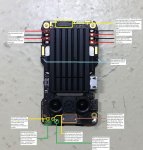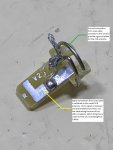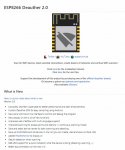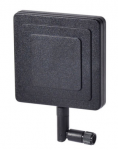I've been working on a few mods that have required me to gut my poor tello several times over. I have put together a couple of pictures that have helped me with my modding. Motor and antenna pinouts, etc.
I'm doing some more research into the tello antenna configuration and will post on that here as well. Write-ups take time, especially when you want to lay a lot of information out in a way that helps others. Please be patient with me as I add my thoughts and results to this thread.
Tello printed circuit board (PCB) layout - viewed from the underside.

Notes on the above picture:
Tello antenna PCB - located in the two rear motor mounts.

Notes on the above picture:
More to come... Just getting this up for the moment and I'll edit/contribute more as a test and confirm my theories.
cheers,
ph2t.
I'm doing some more research into the tello antenna configuration and will post on that here as well. Write-ups take time, especially when you want to lay a lot of information out in a way that helps others. Please be patient with me as I add my thoughts and results to this thread.
Tello printed circuit board (PCB) layout - viewed from the underside.

Notes on the above picture:
- The antenna is approx. 10mm in length, at 2.4GHz this puts it at less 1/10th of the wavelength of the Wi-Fi signal. An antennas length is guided by wavelength of the signal it is carrying. Wavelength is to do with frequency. I won't go into it here, google "wavelength and antennas" to get the gist. The diagram above quotes 1/4 wavelength, this is incorrect.
Tello antenna PCB - located in the two rear motor mounts.

Notes on the above picture:
- The tello has two independent antennas that are not directly connected
- According to other forum posts here it is a smart antenna array (two antennas located in each rear motor mount) that dynamically changes between each antenna depending on which one has the better signal connection to the smartphone controlling it.
- The antennas are patch antennas, a flat antenna that is etched onto a PCB. Usually the ground plane is located on the other side of the PCB - in case of the tello the circular coil located above the antenna is the ground plane.
- The antenna is approx. 10mm in length, at 2.4GHz this puts it at less 1/10th of the wavelength of the Wi-Fi signal. An antennas length is guided by wavelength of the signal it is carrying. Wavelength is to do with frequency. I won't go into it here, google "wavelength and antennas" to get the gist.
- Antennas under a 1/2 wavelength generally perform better when provided with a ground plane (old engineering degree notes here, I might be wrong). The coil shaped wire in the above picture is providing the ground plane for the small antenna that is on the PCB.
- All the transmitting and receiving for the tello is done through its two rear feet, not the arms nor the chassis.
More to come... Just getting this up for the moment and I'll edit/contribute more as a test and confirm my theories.
cheers,
ph2t.
Last edited:




